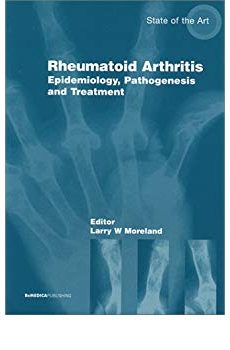
Rheumatoid Arthritis: Epidemiology, Pathogenesis and Treatment
1,890.00₹ 910.00₹
“…Rheumatoid Arthritis: Epidemiology, Pathogenesis and Treatment, focuses on several pertinent issues regarding rheumatoid arthritis. The editor…and individual chapter authors are leaders in their field and have captured the essence of some of the most important issues in the undrstanding of the relationship between pathophysiology of rheumatoid arthritis and its modern treatment… The book is well written in a way that will be useful for several years, because it anticipates the introduction of some new drugs that are not yet available, and it gives appropriate background to understand what their place may be in the therapeutic armamentarium. Overall, this book is well written, consistent, easy to read from cover to cover in a short period of time or flip through to check on various concepts.” Eric P Gall MD, FACP, FACR, writing in the Journal of Clinical Rheumatology
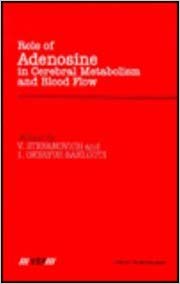
Role of Adenosine in Cerebral Metabolism and Blood Flow
9,690.00₹ 4,600.00₹
It is becoming increasingly realized that adenosine plays an important role in the central metabolism and blood flow and that therapeutic possibilities may arise from the pharmacological manipulation of the adenosine system. The growing interest in this field has prompted a group of international experts to contribute to this volume on adenosine. The book contains thorough reviews on adenosine research and presents numerous new ideas and data on the role and function of adenosine in the mammalian brain.
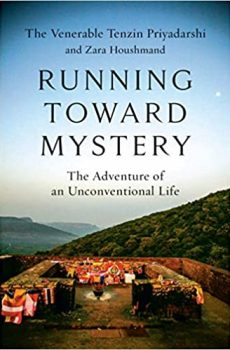
RUNNING TOWARD MYSTERY: THE ADVENTURE OF UNCONVENTIONAL LIFE
599.00₹ 569.00₹
Born in India to a prominent Hindu Brahmin family, the Venerable Tenzin Priyadarshi was only six years old when he began having visions of a mysterious mountain peak, and of men with shaved heads wearing robes the color of sunset. And so at the age of ten, he ran away from boarding school to find this place-taking a train to the end of the line and then riding a bus to wherever it went.

Sailors in the Sky: Memoir of a Navy Aircrewman in the Korean War
1,390.00₹ 1,200.00₹
“On previous flight ops, when a launch was delayed, we usually passed the time telling jokes or exchanging the latest scuttlebutt. Tonight was different. Each of us sat silently with our own thoughts. All of us, I’m sure, made impossible promises to God, and I was one of them. My gut was wound so tight, it was hard to breathe, no less talk. For the umpteenth time, I tightened the harness of my chute. I remember praying, ‘Whatever else happens, don’t make me bail out of this thing!’”
With little to no recognition from the general public, navy enlisted aircrewmen performed heroically in the Korean War. Manning radios and radar, they were indispensable to the success of missions. Aviation Electronics Technician Second Class Jack Sauter was one such aircrewman. Assigned to the USS Midway and the USS Lake Champlain, he flew twenty-one early warning and antisubmarine missions from the backseat of a Douglas Skyraider with Task Force 77 off Korea in support of our troops.
From the excitement and thrill of being catapulted from the deck of an aircraft carrier to the tedium of service at sea, the author describes in detail his service in the Korean air war.
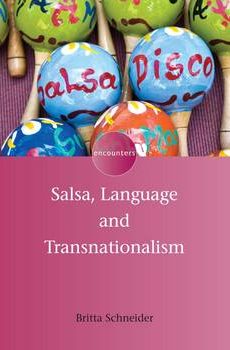
Salsa, Language and Transnationalism
2,690.00₹ 1,390.00₹
What happens in globalised social contexts if people identify with a language that is not traditionally considered to be ‘their’ language? This unique contribution to the field of sociolinguistics scrutinises language ideologies of German and Australian Communities of Practice constituted by Salsa dance and asks what languages symbolise in transnational, non-ethnic cultures. Using ethnographic methodology and a deconstructive approach to language it examines these different Salsa communities and gives insight into the interaction of social discourses from local, national and transnational realms, examining differences, similarities and a simultaneous multiplicity of languages’ symbolic functions. This book will be welcomed by postgraduates, professional sociolinguists and linguistic anthropologists as well as scholars of cultural anthropology, sociology and cultural studies who are interested in the development of modernist categories in transnational culture.

Sandhill and Whooping Cranes: Ancient Voices over America’s Wetlands
910.00₹ 800.00₹
Driving west from Lincoln to Grand Island, Nebraska, Paul A. Johnsgard remarks, is like driving backward in time. “I suspect,” he says, “that the migrating cranes of a pre–ice age period some ten million years ago would fully understand every nuance of the crane conversation going on today along the Platte.”
Johnsgard has spent nearly a half century observing cranes, from a yearly foray to Nebraska’s Platte River valley to see the spring migration, to pilgrimages to the birds’ wintering grounds in Arizona and nesting territory in Alaska. In this book he draws from his own extensive experience as well as the latest science to offer a richly detailed and deeply felt account of the ecology of sandhill and whooping cranes and the wetlands in which they live.
Incorporating current information on changing migration patterns, population trends, and breeding ranges, Johnsgard explains the life cycle of the crane, as well as the significance of these species to our natural world. He also writes frankly of the uncertain future of these majestic birds, as cranes and their habitats face the effects of climate change and increasing human population pressures. Illustrated with the author’s own ink drawings and containing a detailed guide to crane-viewing sites in the United States and Canada, this book is at once an invaluable reference and an eloquent testimony to how much these birds truly mean.

Scenes from a WRITER’S LIFE
250.00₹ 220.00₹
Autobiographical reminiscences of author about his childhood and youth.

Searching for Tamsen Donner
Tamsen Donner. For most the name conjures the ill-fated Donner party trapped in the snows of the Sierra Nevada Mountains in 1846–47. Others might know Tamsen as the stoic pioneer woman who saw her children to safety but stayed with her dying husband at the cost of her own life. For Gabrielle Burton, Tamsen’s story, fascinating in its own right, had long seemed something more: the story of a woman’s life writ large, one whose impossible balancing of self, motherhood, and marriage spoke to Burton’s own experience.
This book tells of Burton’s search to solve the mystery of Tamsen Donner for herself. A graceful mingling of history and memoir, Searching for Tamsen Donner follows Burton and her husband, with their five daughters, on her journey along Tamsen’s path. From Tamsen’s birthplace in Massachusetts to North Carolina, where she lost her first family in the space of three months; to Illinois, where she married George Donner; and finally to the fateful Oregon Trail, Burton recovers one woman’s compelling history through a modern-day family’s adventures into realms of ultimately timeless experiences. Here Burton has also, for the first time, collected and published together all seventeen of Tamsen’s known letters.
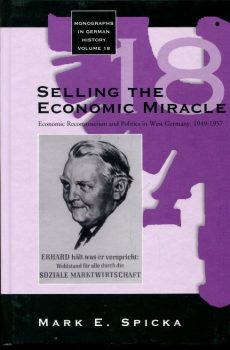
Selling the Economic Miracle
8,400.00₹ 2,095.00₹
Through an examination of election campaign propaganda and various public relations campaigns, reflecting new electioneering techniques borrowed from the United States, this work explores how conservative political and economic groups sought to construct and sell a political meaning of the Social Market Economy and the Economic Miracle in West Germany during the 1950s.The political meaning of economics contributed to conservative electoral success, constructed a new belief in the free market economy within West German society, and provided legitimacy and political stability for the new Federal Republic of Germany.
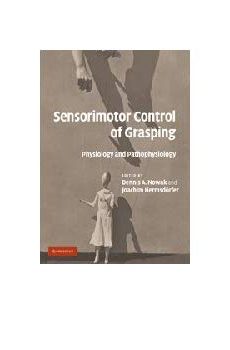
Sensorimotor Control of Grasping: Physiology and Pathophysiology
9,990.00₹ 2,395.00₹
The human hand can take on a huge variety of shapes and functions, providing its owner with a powerful hammer at one time or a delicate pair of forceps at another. The universal utility of the hand is even more enhanced by the ability to amplify the function of the hand by using tools. To understand and appreciate how the human brain controls movements of the hand, it is important to investigate both the healthy motor behaviour and dysfunction during everyday manipulative tasks. This book provides a contemporary summary of the physiology and pathophysiology of the manipulative and exploratory functions of the human hand. With contributions from scientists and clinical researchers of biomechanics, kinesiology, neurophysiology, psychology, physical medicine and rehabilitation, it covers the development of healthy human grasping over the lifespan, the wide spectrum of disability in the pathological state and links basic motor research with modern brain sciences.
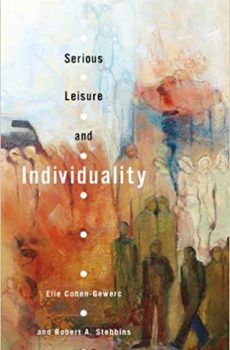
Serious, leisure and individuality
6,490.00₹ 2,990.00₹
What does it mean to be an individual and how can an individual exist within society? Serious Leisure and Individuality examines the circumstances in the modern world that make for individual distinctiveness, and the role of these conditions in personal and social life. “The individual,” said Friedrich Nietzsche, “has always had to struggle to keep from being overwhelmed by the tribe. If you try it, you will be lonely often, and sometimes frightened. But no price is too high to pay for the privilege of owning yourself.” Elie Cohen-Gewerc and Robert Stebbins explore the road to finding that privilege. They approach individuality by examining its relationship to freedom and being free, and by defining and elaborating on the concept of leisure space. They also look at individuality’s place in community, citizenship, and globalization. The complex relationship between individuality and alienation is put under the microscope to highlight the negative side of being distinctive, which has adverse consequences for the individual and society. There are many studies on the modern individual that centre almost entirely on the person facing his local community and broader society. What is missing in the literature – and what Serious Leisure and Individuality provides – is a broad, comprehensive examination of individuality, particularly as it is rooted in leisure and the leisure-like areas of work.

Settling for Less
8,400.00₹ 2,390.00₹
The resettlement of the Negev Bedouin (Israel) has been wrought with controversy since its inception in the 1960s. Presenting evidence from a two-decade period, the author addresses how the changes that took place over the past sixty to seventy years have served the needs and interests of the State rather than those of Bedouin community at large. While town living fostered improvements in social and economic development, numerous unintended consequences jeopardized the success of this planning initiative. As a result, the Bedouin community endured excessive hardship and rapid change, abandoning its nomadic lifestyle and traditions in response to the economic, political, and social pressure from the State―and received very little in return.

SEX AND VANITY
699.00₹ 650.00₹
On her very first morning on the jewel-like island of Capri, Lucie Churchill sets eyes on George Zao and she instantly can’t stand him. She can’t stand it when he gallantly offers to trade hotel rooms with her so that she can have a view of the Tyrrhenian Sea, she can’t stand that he knows more about Casa Malaparte than she does, and she really can’t stand it when he kisses her in the darkness of the ancient ruins of a Roman villa.

SHAME
499.00₹ 380.00₹
Salman Rushdie’s Imaginary Homelands is an important record of one writer’s intellectual and personal odyssey. The seventy essays collected here, written over the last ten years, cover an astonishing range of subjects –the literature of the received masters and of Rushdie’s contemporaries; the politics of colonialism and the ironies of culture; film, politicians, the Labour Party, religious fundamentalism in America, racial prejudice; and the preciousness of the imagination and of free expression. For this paperback edition, the author has written a new essay to mark the third anniversary of the fatwa.
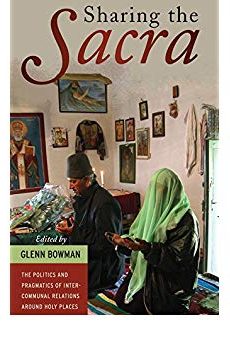
Sharing the Sacra
8,400.00₹ 3,990.00₹
“Shared” sites, where members of distinct, or factionally opposed, religious communities interact-or fail to interact-is the focus of this volume. Chapters based on fieldwork from such diverse sites as India, Nepal, Sri Lanka, China, Turkey, Morocco, Tunisia, and Vietnam demonstrate how sharing and tolerance are both more complex and multifaceted than they are often recognized to be. By including both historical processes (the development of Chinese funerals in late imperial Beijing or the refashioning of memorial commemoration in the wake of the Vietnam war) and particular events (the visit of Pope John Paul II to shared shrines in Sri Lanka or the Al-Qaeda bombing of an ancient Jewish synagogue on the Island of Djerba in Tunisia), the volume demonstrates the importance of understanding the wider contexts within which social interactions take place and shows that tolerance and intercommunalism are simultaneously possible and perpetually under threat.

Shehzadi Mircha: Folktales from the Punjab (Ruskin Bond Selection) Paperback – 10 Oct 2017
350.00₹ 230.00₹
King Karna is fried every morning to provide a fakir’s breakfast, but finds that there is a more generous ruler than he; Raja Rasalu becomes a Jogi just for a glimpse of the fair Queen Sundaran; a rat thinks he drives a good bargain but is astonished when his bargaining brings him a bride and a bulbul pines for green chilies from the garden of a Jinn. These folktales and many others from all over North India were collected by Flora Annie Steel in the nineteenth century. Today, they are an invaluable snapshot of a bygone era; they evoke the timeless India of myth and legend, peopled with talking animals, powerful fakirs and heroic kings, where anything can happen and usually does. Charmingly illustrated by John Lockwood Kipling, father of Rudyard Kipling and complete with original verses in Hindi and Punjabi, Shehzadi Mircha: Folktales from the Punjab is a delightful book for adults and young readers alike.
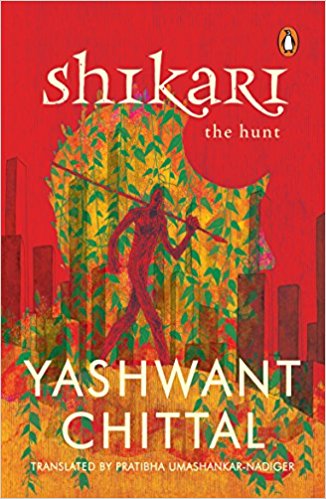
Shikari: The Hunt Paperback – 25 Oct 2017
399.00₹ 260.00₹
Shikari opens a window to a fiercely competitive corporate world where it is often difficult to distinguish between the hunter and the hunted. As the story of Nagappa, framed for causing a fire in the company’s factory, unfolds, it reveals more than the underbelly of workplace politics.

Shopping at Giant Foods
1,820.00₹ 1,295.00₹
From the 1930s through the 1970s, Chinese American owned supermarkets located outside of Chinatown, catering to a non-Chinese clientele, and featuring mainstream American foods and other products and services rose to prominence and phenomenal success in Northern California, only to decline as union regulations and competition from national chains made their operation unprofitable. Alfred Yee’s study of this trajectory is an insider’s view of a fascinating era in Asian American immigration and entrepreneurship. Drawing on oral interviews with individuals who worked in the business during its peak and decline, he presents an accessible history that illustrates how this once-thriving business fostered the social and economic integration of Chinese Americans into life in the United States.
Yee demonstrates how Chinese American supermarkets were able to sell American groceries at reduced prices by using the cheap labor of family members and Chinese immigrants whose entry to the United States had been sponsored by their employers. This type of symbiotic relationship was eventually undermined by labor unions’ demands that employees be covered by labor laws and fully compensated for all hours worked. Also contributing to the ultimate demise of Chinese American supermarkets were increasing costs of capitalization and operation, the dominance of national chain stores, and difficulties arising from traditional Chinese methods of business management.

Short Stay Surgery
22,399.00₹ 15,700.00₹
An ever-increasing number of surgical procedures are now being performed in ambulatory settings. Hospital beds are at a premium and resources are becoming scarcer. This atlas guides readers through all the practicalities: it looks at the potential of short-stay surgery, how to set it up and how it may be relevant to all surgical specialities. Specialists well known in their sphere discuss and illustrate operations that can be performed without a stay in hospital. The topics covered will become more and more relevant as time goes by, and those who read this book will be able to stay well ahead of the game. It is designed to help surgeons plan for the future and discover the vast potential for this form of surgery.
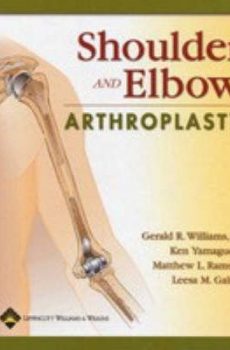
Shoulder and Elbow Arthroplasty
15,900.00₹ 3,850.00₹
Written by the world’s foremost shoulder and elbow surgeons, this volume is the most comprehensive, current reference on shoulder and elbow arthroplasty. The book provides state-of-the-art information on implant design and detailed guidelines—including treatment algorithms—on specific arthroplasty procedures for arthritis, fractures, chronic dislocations, and other disorders. More than 400 illustrations complement the text.
Each main section—shoulder arthroplasty and elbow arthroplasty—has three subsections: implant considerations, technical considerations, and disease-specific considerations. Disease-specific chapters cover surgical anatomy, pathophysiology, preoperative evaluation, indications for surgery, implant choices, surgical techniques, and postoperative rehabilitation. Also included are chapters on complications, revision arthroplasty, arthroplasty with bone loss and limb salvage, and alternatives to replacement arthroplasty. Every chapter includes a “Chapter-at-a-Glance” summary for easy review of the chapter content.





















